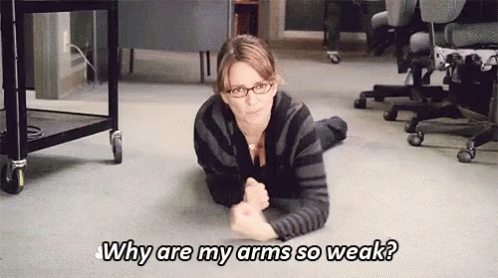I previously wrote about Overactive Muscles and wtf they were.
And there are two sides to every story, or in this case, every muscle.
The National Academy of Sports Medicine defines an Underactive Muscle as, “the state of having disrupted neuromuscular recruitment patterns that lead a muscle to be relatively less active during a joint action,” or in other words, the muscles is lengthened and “weak.” In contrast to Overactive Muscles where they are shortened, tight, and “strong.”
Here’s a NASM video that describes the overactive and underactive muscles that cause an Anterior Pelvic Tilt.
Layman’s Terms:
Essentially, when you have underactive muscles, they don’t work as efficiently as other muscles in the body and therefore, cause muscular imbalances. Also, when you have underactive muscles, those muscles are working less than other muscles, which can cause overactive muscles because they have to compensate for the lazy ones.
It’s important to strengthen underactive muscles because they’re preventing you from living and moving efficiently. Want to be faster and more nimble? Fix that shit.

How Do You Get One?
By not working out your muscles efficiently. Like my previous blog post, muscle imbalances can occur a plethora of ways: overuse, poor posture, stress, and injury, to name a few.
Your body is smart-ish. It’ll take the path of least resistance and if a muscle is strained or isn’t performing an action, it finds another one to use. When a muscle isn’t used enough, it becomes underactive, which lengthens it, and therefore, isn’t as effective as the muscle being used.

How Do You Find the Underactive Muscles?
Get a trained professional to help you. NASM-Certified Personal Trainers know how to conduct a Overhead Squat Assessment and a Postural Assessment and have the trained eye to find the overactive and underactive muscles.
You have 5 body checkpoints you want to make sure are aligned: Feet, Knees, Lumbar-pelvic-hip Complex, Shoulders, and Head.
How Do You Fix Them?
I can develop a plan based on the results of your Postural and Overhead Squat Assessments. We inhibit the overactive muscles and strengthen the underactive with different exercises that activate those particular muscles.
Thanks to my patrons who make my writing possible. You can become part of our club here:
Become a Patron!